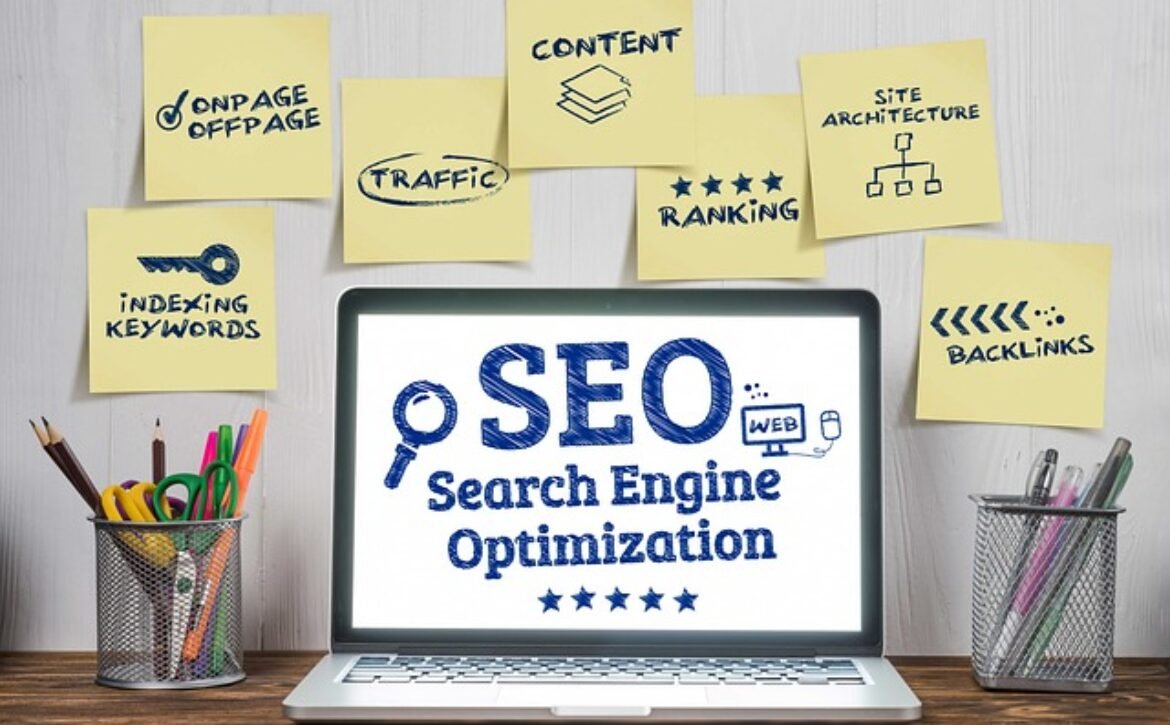Why Local SEO for Doctors Is the Key to Filling Appointment Slots Fast
Today’s competitive healthcare market demands that doctors need more than competency—exposure. How Local SEO for doctors is the key to filling slots rapidly is through its ability to connect clinics with local patients in active search of treatment. With optimization of websites, Google Business Profiles, and local directories, health care SEO firms place your practice in front of the correct audience at the correct time. Collaborating with a quality healthcare SEO agency or medical SEO companies helps to streamline patient acquisition, reduce empty appointment slots, and optimize overall practice efficiency so doctors can focus on providing quality care.
The Cost of Empty Appointment Slots in Medical Practices
Empty appointment slots directly affect a medical practice’s bottom line and efficiency. Each unscheduled slot turns into lost income and wasted personnel time, cutting into overall profitability. Frequent gaps also disrupt the flow of workflow, leading to idle resources and lower patient satisfaction. For physicians, missed appointments mean fewer opportunities to create patient relationships and provide care. Practices may need to invest additional money in marketing in an effort to fill these slots. Adopting methods like local SEO for doctors, automated reminders, and flexible scheduling can help minimize vacancies, maximize day-to-day productivity, and ensure a steady stream of patients, resulting in both improved financial performance and quality of care.
Why Local SEO for Doctors Enhances Appointment Slot Fill-Up Times
1. Increases Online Visibility
Local SEO for doctors enables your clinic to appear on local search results when patients are searching for medical services in their locality. Collaborating with a healthcare SEO firm or employing medical SEO firms can strengthen your online visibility. Healthcare SEO services maximize your website, Google Business Profile, and local directories to make it simpler for patients to locate your practice. Healthcare SEO services enhance Google Maps as well as local search exposure. Ranked higher, your clinic has greater chances of drawing patients rapidly, filling vacated appointment slots, and keeping schedules full.
2. Successfully Taps Nearby Patients
Local SEO for doctors reaches out to nearby patients, making bookings instantly. Healthcare SEO experts at an SEO agency assist in optimizing location-based keywords like “doctor near me” or “clinic in [city].” Healthcare SEO agencies can make your content and metadata appeal to local searchers who are looking for care. Healthcare SEO tactics, like SEO services for healthcare, boost the likelihood of patients visiting your clinic.
3. Increases Google Maps Listings
Google will crawl your site regularly, and it will increase local search traffic. Google Maps is one of the biggest resources for patients looking for local physicians. Local SEO for doctors makes you easier to find on maps with accurate contact information, ratings, and location keywords. A healthcare SEO agency or SEO agency for healthcare can do these optimizations. Healthcare SEO companies focus on getting clinics higher in local searches. Healthcare SEO services ensure your clinic appears in map packs, making it easier for patients to find and book appointments. Strong map rankings reduce empty appointment slots, attract more local patients, and give your practice an edge over competitors in the area.
4. Encourages Online Reviews
Patient reviews are critical in healthcare decision-making. Local SEO for physicians calls on happy patients to post good reviews. Medical SEO companies and healthcare SEO services help manage and optimize such reviews. A healthcare SEO agency is able to leverage online reviews to improve rankings and trust. Healthcare SEO tactics by SEO agencies ensure that reviews highlight your clinic’s specialty, improving patient trust. Local SEO for physicians combined with good review management earns faster bookings, reduces no-shows, and establishes your presence online, so your clinic receives more patients on a regular basis.
5. Enables Mobile-Specific Booking
Most patients search for medical providers on mobile devices. Local SEO for physicians makes your booking system and website mobile-optimized. A healthcare SEO firm or healthcare SEO agency can improve site speed, navigation, and booking forms. Healthcare SEO companies and medical SEO firms make online booking easy. Healthcare SEO services allow patients to book appointments in real-time, reducing vacant times. Mobile-friendly websites improve convenience and patient satisfaction while enabling your practice to fill up more appointments in a timely manner, full schedules, and increasing revenues.
6. Leverages Local Keywords
Local SEO for doctors uses location-based keywords to target patients in the local area. Healthcare SEO and healthcare agency SEO experts research high-performing local keywords. Healthcare SEO companies and medical SEO services integrate these keywords into website content, blog posts, and meta tags. Healthcare SEO services ensure that patients searching for “pediatrician in [city]” or “dermatologist near me” can find your practice easily.”.
Local keywords optimized boost ranks and exposure, attracting patients willing to schedule an appointment, reducing vacant slots, and achieving steady streams of new and return patients.
7. Optimizes Website for Conversions
Medical SEO for physicians optimizes website functionality to convert visitors into scheduled patients. Healthcare SEO and healthcare SEO agency optimize landing pages, call-to-action buttons, and appointment forms. Medical SEO companies implement practices that allow for simple and easy scheduling. Healthcare SEO services grant patients instant access to view availability and schedule appointments. When conversion optimization is combined with local SEO for doctors, clinics save unnecessary appointment time slots, are more operationally effective, and achieve more revenue by converting search traffic into confirmed patients on a constant basis.
8. Highlights Special Services
Local SEO for doctors allows practices to promote unique services such as telemedicine, urgent care, or specialized treatments. Healthcare SEO firms and healthcare SEO specialists in SEO agencies optimize service pages to target patients who are searching for these services. Healthcare SEO services and medical SEO firms ensure the services are discovered in local search. Medical SEO firms and healthcare SEO agencies make patients locate what they are seeking and schedule appointments faster. Services-focused marketing reduces vacant spots, establishes your clinic as a neighborhood authority, and creates targeted patient visits on an ongoing basis.
9. Connects Through Local Content
Building location-specific content strengthens Local SEO for doctors. Healthcare SEO and healthcare agency SEO teams write blogs, articles, and posts on matters relevant to community health issues or holiday health tips for care. Medical SEO companies and healthcare SEO services push local content optimization. Healthcare SEO boosts engagement and visibility, attracting nearby patients actively looking for data. When clinics publish relevant local content, they build trust, book empty appointment slots faster, and gain a strong reputation locally, developing consistent patient flow.
10. Take advantage of Google Business Features
Google Business Profile elements such as posts, Q&A, and booking buttons are a prerequisite for Local SEO for doctors. Healthcare SEO agencies and healthcare SEO professionals make the most of these features for maximum visibility. Healthcare SEO agencies and healthcare SEO professionals update appointment hours, services, and clinic hours. Healthcare SEO services offer instant visibility of availability and enable instant booking. Accurate use of Google Business removes empty spaces, establishes credibility, and makes your clinic competitive in local search, filling schedules faster and effectively.
Local SEO for doctors is not a marketing campaign—it’s an arrangement that functions to fill appointment space faster and keep your practice running smoothly. By utilizing healthcare SEO services, healthcare SEO agency expertise, and medical SEO firms, clinics can attract more local patients, gain more online visibility, and fill empty schedules.
Investing in health care SEO guarantees that your clinic is prominent in an oversaturated market, attracts appropriate patients, and makes the most revenue.
Act now by consulting with a reputable healthcare SEO firm to optimize your practice and begin filling appointment slots on a regular basis.
FAQs
1. What is Local SEO for doctors?
Local SEO for doctors is an optimization process of a clinic’s online presence so that they reach near patients through local searches, Google Maps, and directories.
2. How does Local SEO guarantee filled appointment slots?
With increased visibility in local search and Google Business Profiles, Local SEO makes it easier for patients to discover and fill empty appointments.
3. Do I need a healthcare SEO agency for this?
Yes. Medical SEO companies and Healthcare SEO agencies have the expertise to optimize directories, websites, and content so that your clinic is visible to the right local audience.
4. How long does the process take to show results?
Results will vary, but most clinics notice enhanced visibility and booking of appointments after 2–4 months of implementing Local SEO measures effectively.












 Review your medical SEO everyday with tools such as Google Analytics and Search Console. Review which pages are pulling the most traffic, what keywords are pushing traffic, and where traffic is dropping off. Make changes according to these, rank what is performing well, and repair areas of weakness. Regular monitoring allows your
Review your medical SEO everyday with tools such as Google Analytics and Search Console. Review which pages are pulling the most traffic, what keywords are pushing traffic, and where traffic is dropping off. Make changes according to these, rank what is performing well, and repair areas of weakness. Regular monitoring allows your 



